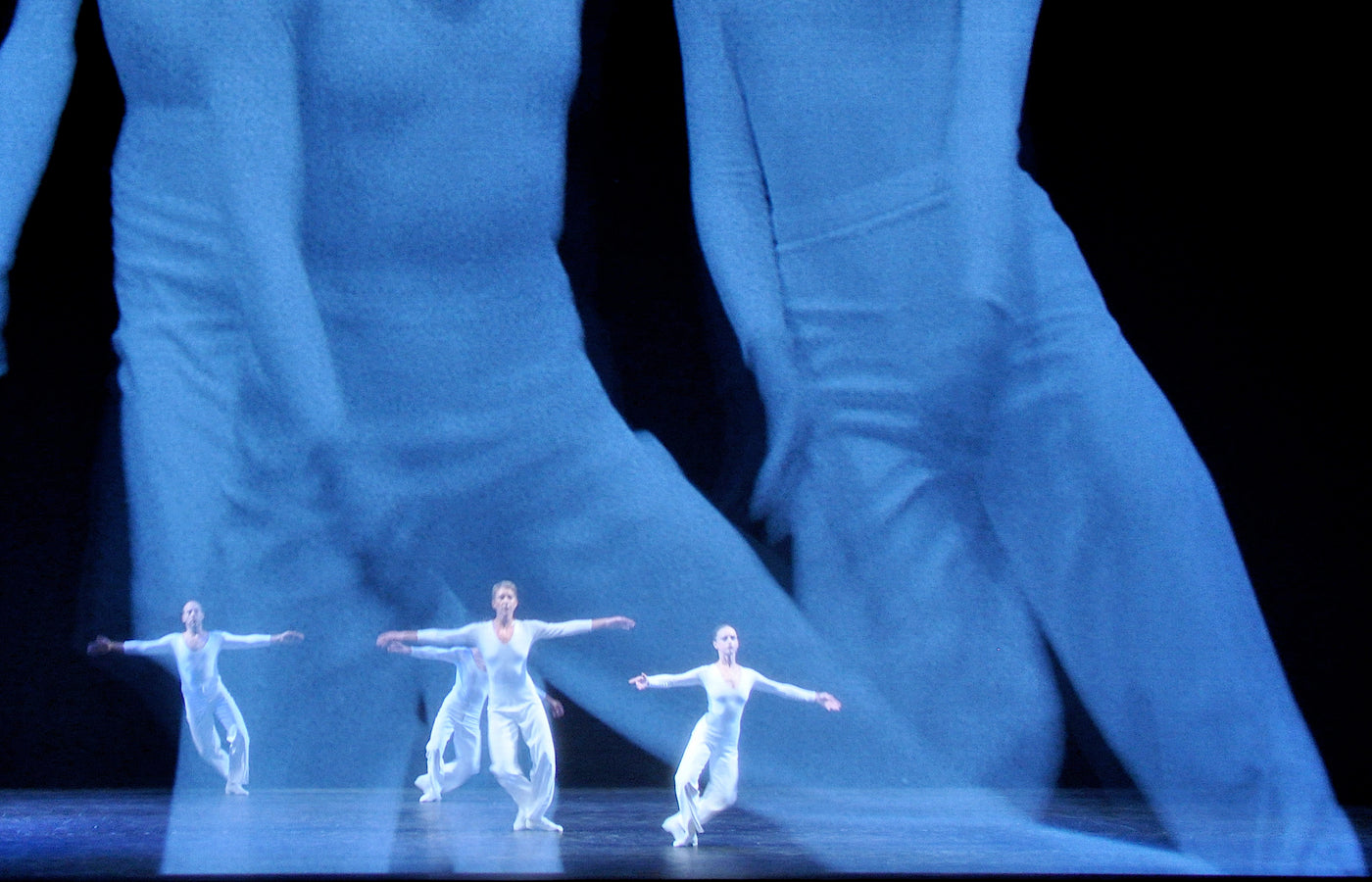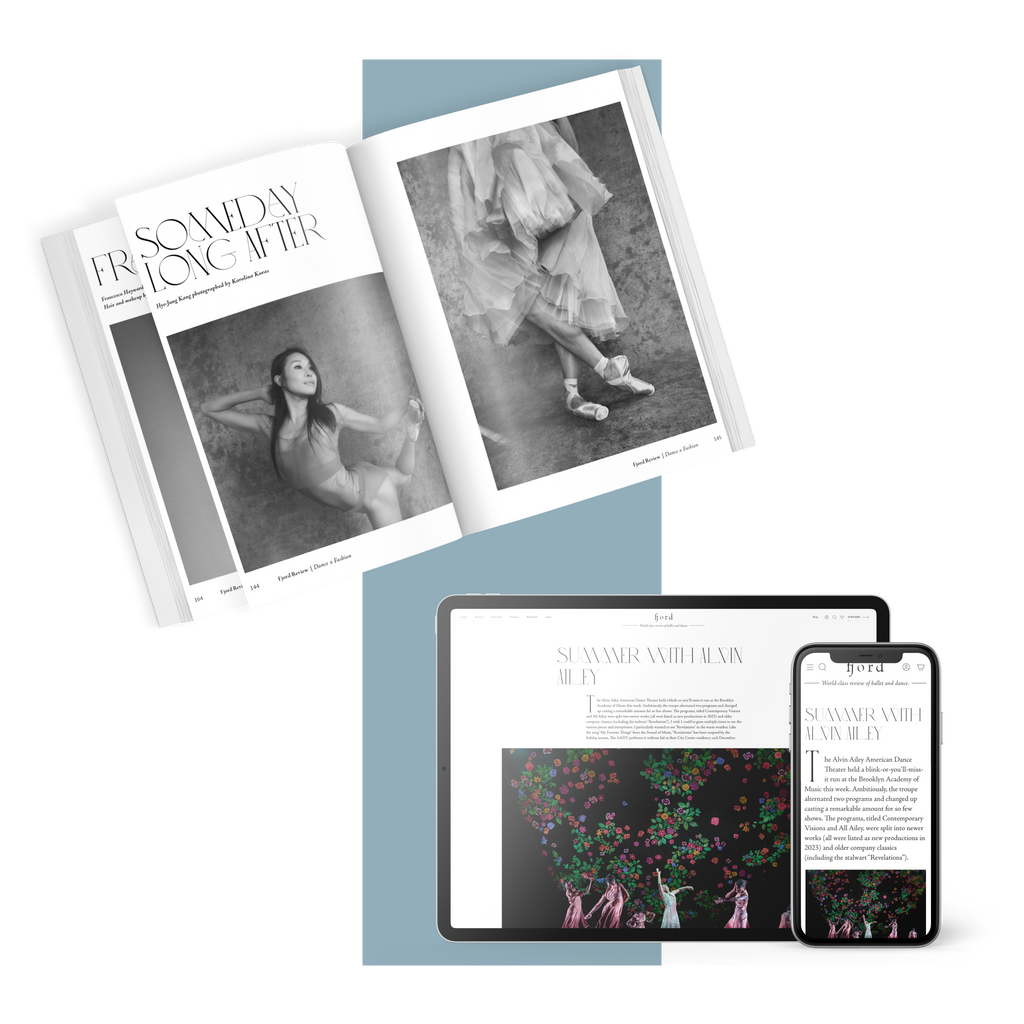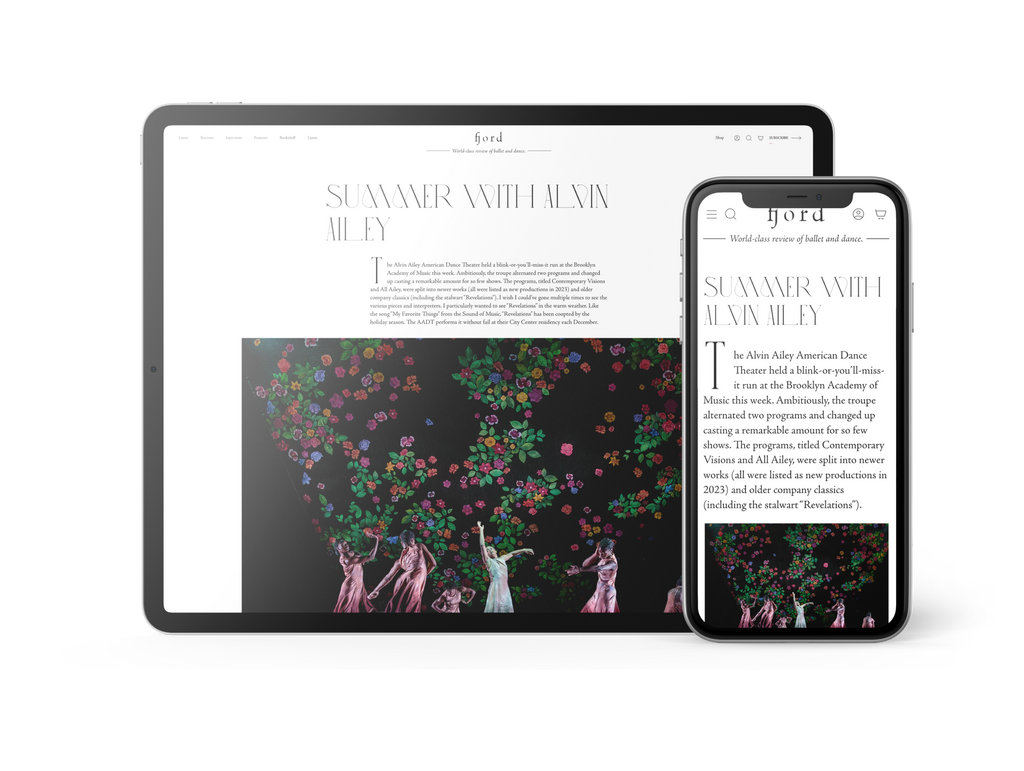Spellbound
Two performers crawl in on hands and knees wearing neon green, hooded coveralls—the lightweight papery kind made for working in a sterile environment—and clusters of balloons pinned to their backs.
Continue Reading
World-class review of ballet and dance.
It isn’t as mainstream as the Opera Garnier’s season opening. Facing the Théâtre du Châtelet, the Théâtre de la Ville hosts a yearly festival as fall takes its toll on yellowish leaves of Haussmann boulevards. In spite of its great media coverage by contemporary dance enthusiasts and low pricing policy, Le Festival d’automne, is something of a well-kept secret. The 2016 edition is dedicated to Lucinda Childs’ postmodern vibes, featuring her famous piece, “Dance” the evening of the premiere. When first performed in 1979, “Dance” met with mixed reception. Later, it earned the status of ‘masterpiece’ and it’s rare to read a review where Lucinda Childs is not labelled as a genius choreographer, being a powerful dance mathematician. Now, “Dance” is back in the Childs-accustomed walls of Théâtre de la Ville, in a restaged version. The projections on the monochrome grid make the dancers move along with ghostly figures, as if emerging from the past. Sadly, Lucinda Childs' emblematic aura vanished, altering the uncanny dialogue which Sol LeWitt's original film used to trigger. And what's a masterpiece without the shadow of its creator?
Performance
Place
Words

Lucinda Childs' “Dance.” Photograph by Sally Cohn


“Uncommonly intelligent, substantial coverage.”
Your weekly source for world-class dance reviews, interviews, articles, and more.
Already a paid subscriber? Login
Two performers crawl in on hands and knees wearing neon green, hooded coveralls—the lightweight papery kind made for working in a sterile environment—and clusters of balloons pinned to their backs.
Continue ReadingWill Rawls makes boundaries visible by defying them. Known for the disciplinary and topical range of his projects, the choreographer, director, and performer approaches issues of representation in “[siccer],” a multi-part, multi-site work co-presented by L’Alliance New York’s Crossing the Line Festival. A live performance at Performance Space New York accompanies a multimedia installation at the Kitchen, a book published by Wendy’s Subway, and an album published by the artist. With a creative process reaching back to 2018, the work delves explicitly into pandemic-era energies and inertias with focused intimacy and a pervasive sense of instability.
Continue ReadingIt is always interesting when multiple theme steps emerge over the course of a mixed repertory evening, but it is uncanny on one featuring five different ballets, each with a different choreographer and composer, covering a twenty-year span (2005-2025).
Continue ReadingZvidance premiered its new work “Dandelion” mid-November at New York Live Arts. Founded by Zvi Gotheiner in 1989, Zvidance has been a steady presence in the New York contemporary dance scene, a reliable source of compositional integrity, and a magnet for wonderful dancers.
Continue Reading
comments